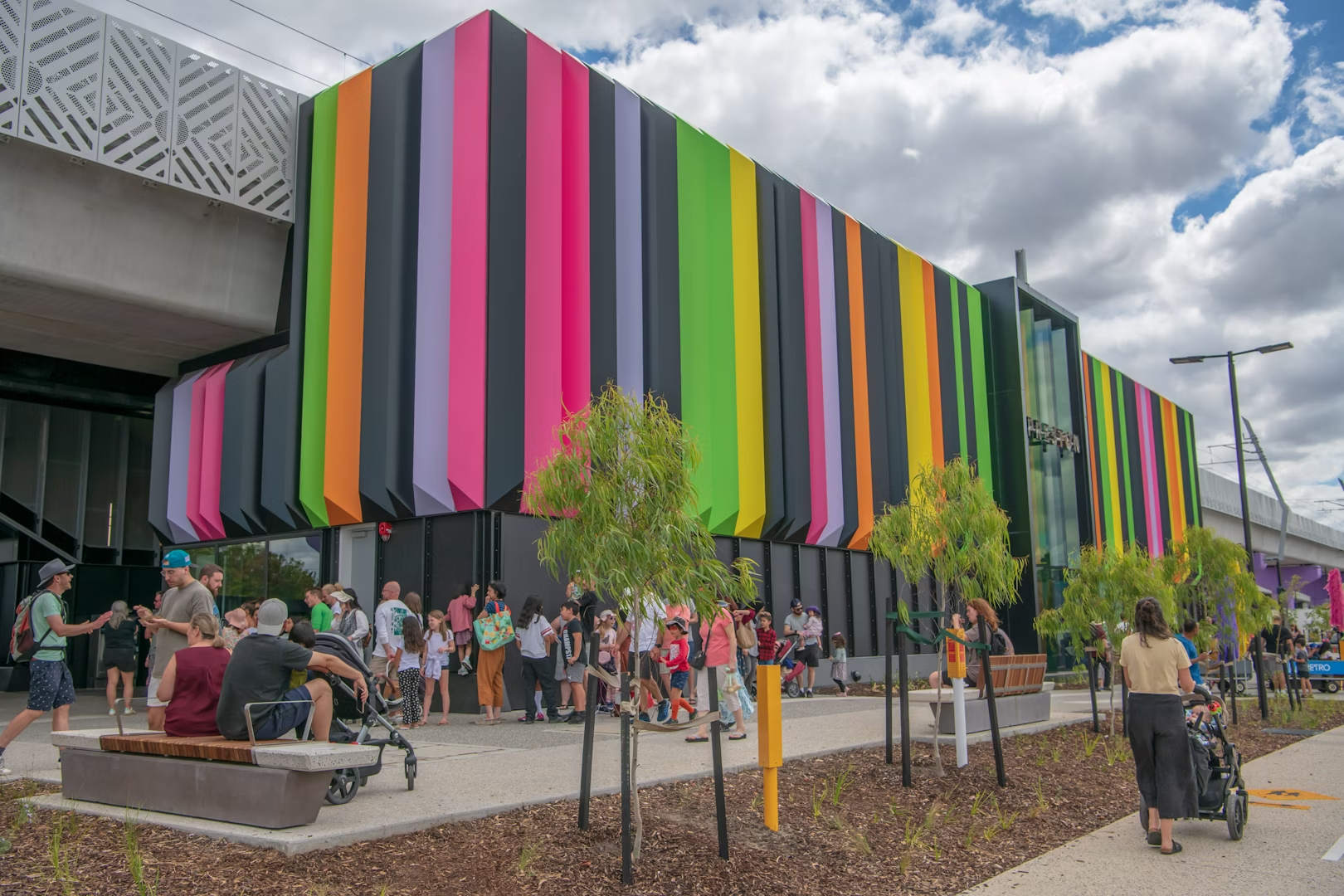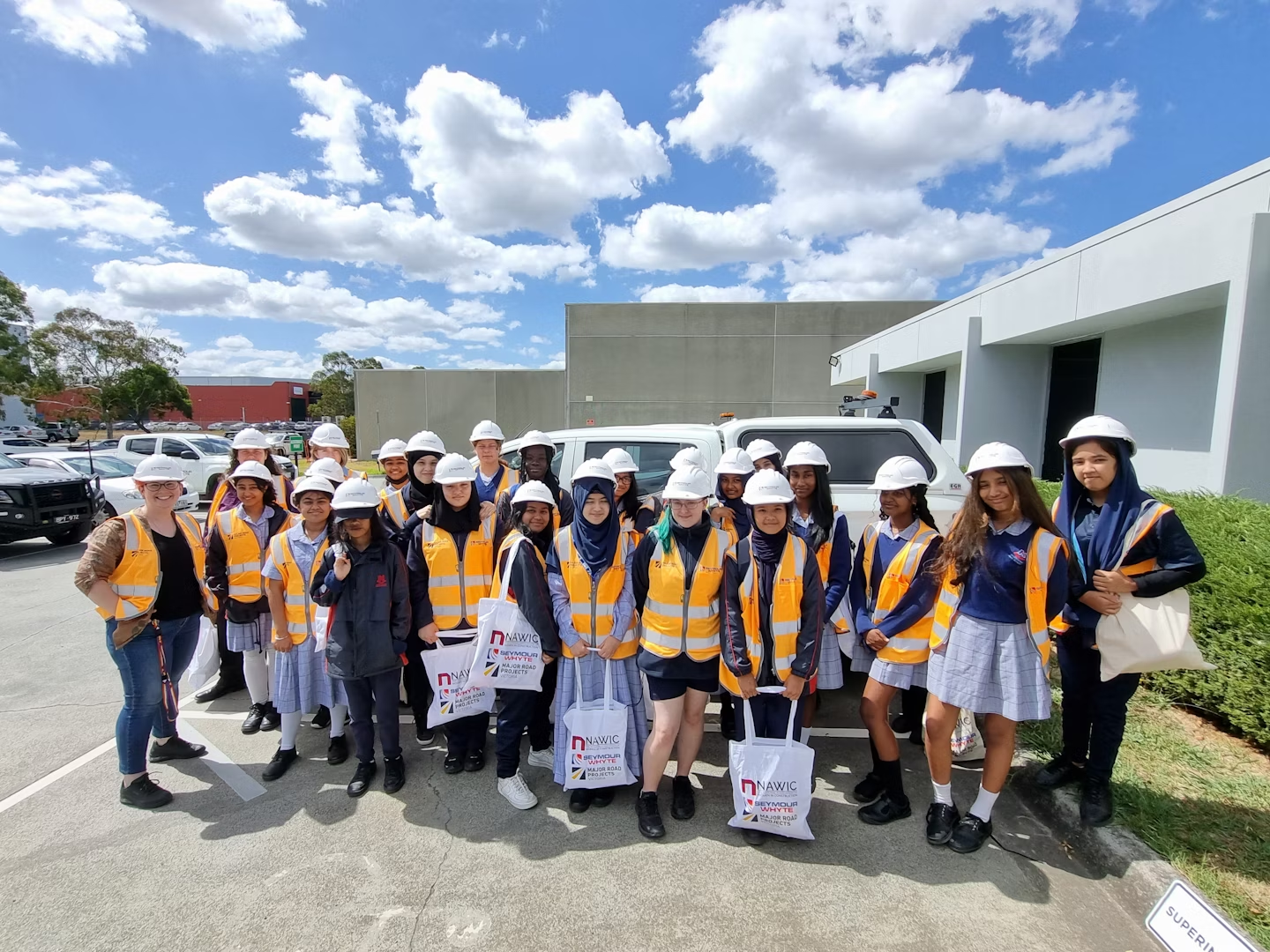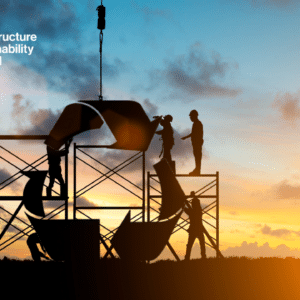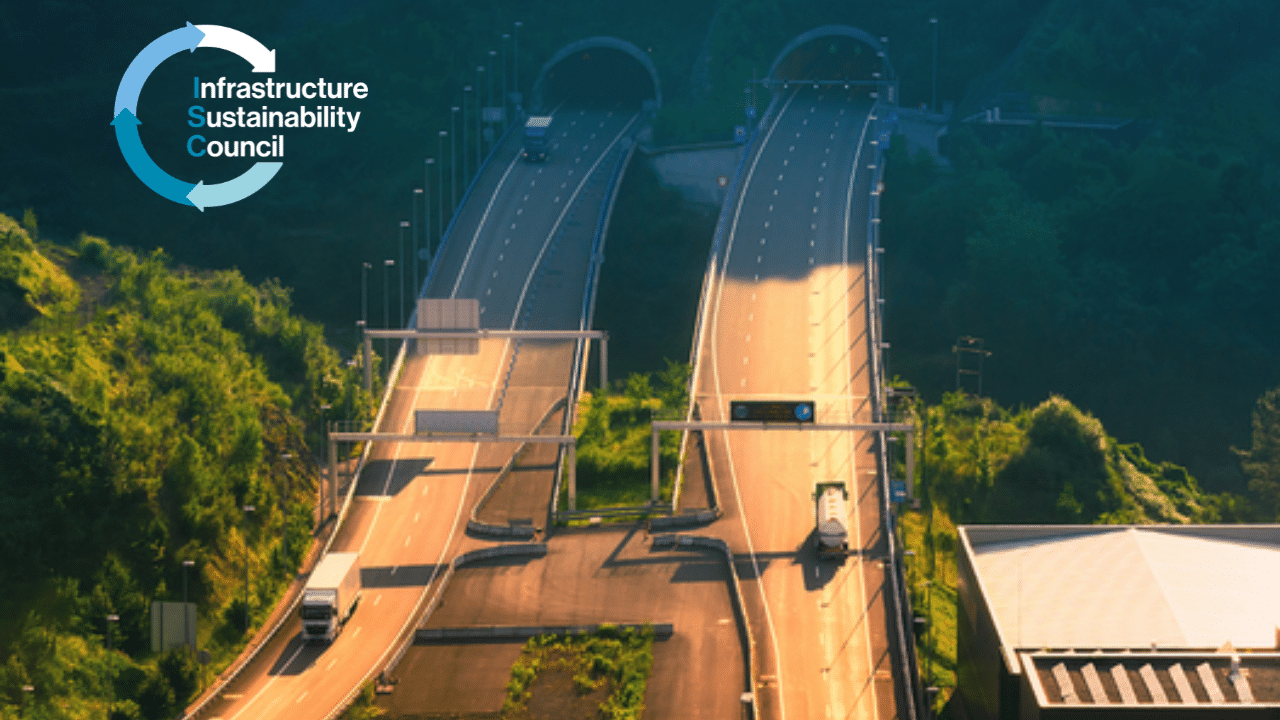The Preston Level Crossing Removal Project, completed in 2022 by North Western Program Alliance (NWPA), exemplifies outstanding excellence in sustainable infrastructure. This complex rail project removed four level crossings, constructed two kilometres of elevated rail viaduct, two new stations and precincts, and extensive open spaces, converting a brownfield rail line into a green corridor for the community.
NWPA’s governance framework embedded sustainability early resulting in innovative engineering and community engagement solutions including:
• Radiant Heat Curing (Australian first)
• Single-Line Running (Victorian first)
• Indigenous engagement and design
• Local community developed solutions
Quantifiable sustainability outcomes include a 47% reduction in energy emissions, 24% reduction in materials emissions, and a 105% increase in ecological value. The Project created 60,000m2 of new public space and invested $1.28 million into 22 social enterprises and 25 indigenous owned businesses.
Focused on community engagement, innovative design and environmental stewardship, Preston set a benchmark for sustainable rail infrastructure.
Describe WHAT you have done and HOW you have done it. Please provide a summary of your initiative, innovation, or approach.
The Preston LXRP, part of Victoria’s landmark Level Crossing Removal Project (LXRP), was a complex project to remove four level crossings, construct 2km of elevated viaducts, two new premium stations and a revitilised public corridor in Melbourne’s inner north.
WHAT WE DID: Getting Sustainability Governance Right
NWPA comprises LXRP (client), and John Holland (principal contractor), Kellogg Brown & Root (designer), and Metro Trains Melbourne (network operator). This Alliance model embeds LXRP as a partner, enabling effective collaboration, to continually raise industry standards for sustainable infrastructure.
Early project engagement and collaboration allowed NWPA to embed sustainability initiatives and processes in the development stages, rather than in the delivery phase, when the Project’s design and footprint is largely set. NWPA effectively influenced and shaped outcomes, which delivered not only a built-to-standard project, but sustainable precincts that have improved quality of life outcomes for the Preston community.
HOW WE DID IT: Governance principles for quadruple bottom line outcomes
NWPA achieved a holistically sustainable project using the governance principles of:
- early engagement,
- optioneering and multi-criteria analysis and
- partnerships and collaborations.
Early engagement for People outcomes through seeking advice, preferences and solutions:
• The Project established the Preston Open Space Advisory Panel (POSAP) during tender to engage and empower community-nominated representatives. This drove understanding and collaboration between the design and delivery team and the community. Three areas of open space were identified for the POSAP to provide their advice and preferences, which gave a sense of ownership and ensured areas of the design were inclusive and featured community-led solutions.
• NWPA directly engaged with the local Wurundjeri Elders during tender to ensure local Indigenous culture was authentically and meaningfully represented. Face-to-face workshops with local Elders allowed the Project team to walk together, learning their stories and seeking feedback on design concepts.
Optioneering and multi-criteria analysis for Planet outcomes through assessing potential engineering solutions to ensure they holistically achieve the best outcome for all:
• The Project’s innovative Single-Line Running (SLR) strategy resulted from this comprehensive process. Through careful planning, this innovation kept trains running in both directions on one track, while viaduct construction occurred on the other.
• Implemented for the first time in Victoria, the SLR strategy allowed the build of 2km of viaducts while minimising interruption to train services and commuters. This innovation overcame project constraints, minimised disruption and provided a cost-effective and clever solution that delivered multiple sustainability outcomes.
Partnerships and collaboration for Economic outcomes through early engagement with subcontractors enabled the Project to optimise industry capabilities and discover innovations:
• The successful implementation of Radiant Heat Curing (RHC) resulted from early collaboration during
tender, to develop, test and gain approval. NWPA partnered with subcontractor Civil Infrastructure Group (CIG) to develop a method of accelerating concrete curing times, allowing a rapid cast ‘in situ’ program.
NWPA has continued to leverage and further enhance its governance framework supporting the creation of sustainable infrastructure projects at Pakenham and Keon Parade. This sets a new standard for sustainable infrastructure helping other projects to build upon its success.
What were the OUTCOMES and how were those outcomes shared?
The Preston LXRP has achieved important outcomes for people, the planet and the economy.
Environmental achievements
Energy:
The Project reduced carbon emissions by 47% through delivery and operational initiatives.
• The Single Line Running solution reduced the cost and total hours of replacement buses for disrupted train services by 64%, with reduced bussing hours representing a carbon reduction of 494t.
• To minimise future operations emissions, project optioneering ensured the station roof was designed to maximise size and orientation for solar. The Project installed a 60kW solar array, the largest system on an LXRP station at the time, resulting in emissions savings of around 3600t of carbon over its lifetime.
• The Project also worked with Metro Trains Melbourne to reduce the number of hours feature lighting is on at night. This negotiation reduces lighting carbon emissions by 20.9%, and has been rolled out on further LXRP projects.
Materials:
The Project reduced materials embodied emissions by 24% through elimination and substitution initiatives embedded early, leading to:
- Avoidance of high cement content that would usually be needed for high-speed curing, through the Radiant Heat Curing approach, representing a 45% reduction in curing times.
- Reduction in retaining wall heights reduced concrete emissions by 42t.
- Substitution of 4kms of paths with carbon neutral EMesh and Holcim Ecopact (saving 49t carbon), adopted as a preferred solution on all LXRP projects.
Climate Resilient New Open Spaces:
100% of designed tree species were reviewed against University of Melbourne resilience data, with 2 species substitutions implemented to ensure long term survival in the face of a changing climate. This resulted in 60,000m2 of climate resilient landscaped spaces, increasing ecological value by 105%.
Economic achievements
The Project contributed to the local economy through:
• Creation of a modern multimodal transport hub that has improved road, public and active transport adjacent to Preston Market, a key hub for local traders.
• Creating local jobs and upskilling workers with 487 jobs, including 133 apprenticeships, created to support the construction and rail industry.
• The project engaged 22 social enterprises and 25 indigenous businesses, with a total spend of $1.28million and $28million respectively, leveraging the Project to create more jobs for disadvantaged Victorians.
Social achievements
• The Project achieved exemplar community outcomes including:
• Unlocking 60,000m2 of new public open space, creating a modern multimodal transport hub. Through advice from the Public Open Space Advisory Panel, the final outcomes feature an amphitheatre, play and exercise equipment, yarning circle, barbecue area and 2.6 km of bicycle and pedestrian pathways, connecting the local community and commuters with transport, retail and recreational facilities.
• Strong cohesion of Indigenous design elements across the Project’s architecture, integrated artwork, landscaping, and wayfinding. The theme for the Project’s ‘Oakover Green’ space was the result of workshops with Wurundjeri Traditional Owners. The story of Baliyang the bat, creator of women, is depicted, creating a space for the Indigenous female voice. A yarning circle as well as native plantings and landscaping from Aboriginal-owned contractor Wamarra, interprets, enhances, and promotes cultural learning and knowledge sharing for the community.
Sharing Outcomes:
Industry recognition is an excellent method to share and inspire outcomes across the industry. The Project has been recognised through the following awards:
• Winner – Infrastructure Sustainability Council (ISC) Excellence in Governance Outcomes 2023 for the sustainability governance framework.
• Winner – Infrastructure Project Excellence Award at the 2023 Australasian Rail Association (ARA) Industry Awards for SRL and RHC initiatives.
• Winner – 2024 Victorian Architecture Awards – Award for Public Architecture for social and heritage outcomes.
• Winner – 2024 Victorian Architecture Awards – Award for Urban Design for social and environmental outcomes.
NWPA shares expertise and learnings from all projects to support the broader LXRP program and adoption of sustainable initiatives and innovations across wider industries through:
• Sharing case studies and lessons at relevant industry conferences including the ISC NZ Conference, ARA National Rail Sustainability Conference, AustRoads Seminar and ARA AustRail Conference.
• Sharing knowledge with Infrastructure Victoria and Infrastructure Australia to inform their policy recommendations.
• Hosting tours to local and international delegates including Ecologiq, Mass Transit Railway (MTR) from Hong Kong and the Winston Churchill Fellowship recipient from New Zealand.
• Publishing the annual NWPA Sustainability Report.
• Partnering with subcontractor CIG to patent and share the RHC technology.
Describe WHO benefited from your initiative, innovation, or approach?
The Project leaves a lasting legacy, directly benefiting Preston residents, business owners and community stakeholders and indirectly benefiting the wider construction industry.
Community
• Enhanced safety and accessibility to Preston and Bell stations on one of Melbourne’s busiest public transport routes to and from the CBD, supporting more than 200 trains a day – This was achieved whilst minimising impact to the road and public transport network and avoided some property acquisitions through the innovative SLR construction strategy. With over 80,000 customers per week, Preston Market visitors can now experience a premium station and green space directly adjacent.
• Open spaces and interconnected cycling and pedestrian paths – NWPA consulted with critical stakeholders to deliver the right public amenities and design. We engaged the Preston Open Space Advisory Panel to understand the local community’s wishes and needs. The Panel helped shape the Project at three locations, ensuring our design met expectations and benefits the wider community.
• Sharing Wurundjeri culture – supports reconciliation and sharing of cultural knowledge through authentic engagement and collaboration with Traditional Owners to represent local Indigenous culture in the new community spaces. This also directly benefits the Project team in building their understanding and respect of Aboriginal culture that they carry with them to future projects.
Diverse suppliers
• The Project significantly contributed to equity, diversity and inclusion in rail and construction. Through this Project, NWPA and its subcontractors created 487 jobs, including 133 apprenticeships. The Project has worked collaboratively with our Indigenous and Social Enterprise businesses to ensure their sustainable growth into the construction industry.
Industry
• Power of the program – NWPA uses its long-term relationships with suppliers to support sustainability solutions such as the Radiant Heat Curing (RHC) innovation. We optimise the use of subcontractor forums to inspire strategic procurement and work with suppliers to promote their solutions through innovation showcases and conferences. Through this CIG has now patented their RHC innovation which is now in use across the industry.
• Single Line Running (SLR) innovation – This was the first time this innovative and complex strategy was used on the LXRP program, setting a precedent for its use on future projects. A version of this strategy has been adopted at Keon Parade LXRP.
• NWPA has advocated and shared lessons for embedding sustainability in development with infrastructure clients in Victoria and nationally. Since providing outcomes-based evidence for Preston LXRP we have observed industry enhancements in sustainability tender requirements.
What LEGACY and UN SDG CONTRIBUTION was achieved?
The Project set a benchmark for rail infrastructure projects by creating sustainable and bold public places. The innovations have been endorsed for future use, creating a lasting legacy impact on infrastructure projects beyond Preston.
Innovation and Knowledge Sharing
• Key innovations such as Single Line Running, Radiant Heat Curing and low carbon concrete pavement have been adopted within the construction industry in Victoria.
• The award-winning sustainability governance framework has been shared with other sustainability professionals across industries and provides a roadmap which will help project accelerate their sustainability initiatives. The 2022 NWPA Annual Report spotlights Preston’s ‘Power of the Program’ approach, available for the whole industry.
Successful Community Engagement
• Strong community engagement and collaboration with the local community through Council, the Preston Open Space Advisory Panel (POSAP), Indigenous stakeholders, businesses, and community interest groups, saw the design of a transport hub and precinct of connected public amenities that met community needs and reflected the area’s characteristics.
Urban design
The Project’s new urban precinct enhanced sustainability in the wider community through:
• Fostering a culture of collaboration to realise engagement strategies that develop community led solutions for the new ‘Oakover Green’ space.
• Enhancing human interaction and experiences with nature, which builds affinity and appreciation for the environment.
• Bringing Indigenous culture and knowledge to the forefront of design, which supports reconciliation and encourages the perception of urban spaces embedded in a wider cultural context.
• Encourages and enables active transport, specifically cycling and walking, which reduces transport emissions and helps create community resilience through better health outcomes.
Governance
• NWPA’s approach to continuous improvement ensures we are at the forefront of sustainable innovations, embedding sustainability in projects, such as Preston, as early as possible.
• In 2021, the role of Strategic Procurement Manager was created, to focus on the sourcing of sustainable materials and innovative subcontractors, and to support diversity by engaging social enterprises and Indigenous-owned businesses.
• In 2023, NWPA promoted its Sustainability Manager to Director Transformation and Sustainability, to ensure sustainability is represented at all key strategic decision-making gates and drive our team to continually strive for transformational change towards sustainability.
Sustainable Development Goals:
The initiatives highlighted in this submission address nine UN SDGs and are measured, tracked, and publicly reported to drive improvement for each project.
• SDG 3: Good Health and Wellbeing through the reduction of road injuries by removing four level crossings and increasing shared user paths by 105%.
• SDG 7: Affordable and Clean Energy through a 17% increase in renewable energy through 90kW solar system at Bell and Preston stations, and 47% overall energy reduction.
• SDG 8: Decent Work and Economic Growth through our social enterprise engagement (total spend $1.28m) and diverse employment, creating local jobs and engaging local businesses.
• SDG 9: Industry, Innovation and Infrastructure through sustainable governance and innovative engineering solutions such as SLR and RHC.
• SDG 10: Reduced Inequalities through the creation of equitable, inclusive public spaces and facilities while also supporting Aboriginal-owned businesses (total spend $28 million) and social enterprises
• SDG 11: Sustainable Cities and Communities through resilient, inclusive and sustainable urban design which created 60,000m2 of sustainable public spaces and improved urban mobility.
• SDG 12: Responsible Consumption through 22% materials embodied carbon reduction, sustainable procurement practices and annual reporting.
• SDG 13: Climate Action through 100% tree species designed for climate resilience.
• SDG 15: Life on Land through 105% enhancement of ecological value.
The Project leveraged complex engineering challenges to improve the quality of life for the surrounding communities, embedding sustainability early into project development to realise exceptional sustainability outcomes. This approach can be adapted to any greenfield development, brownfield development, and urban renewal projects.






